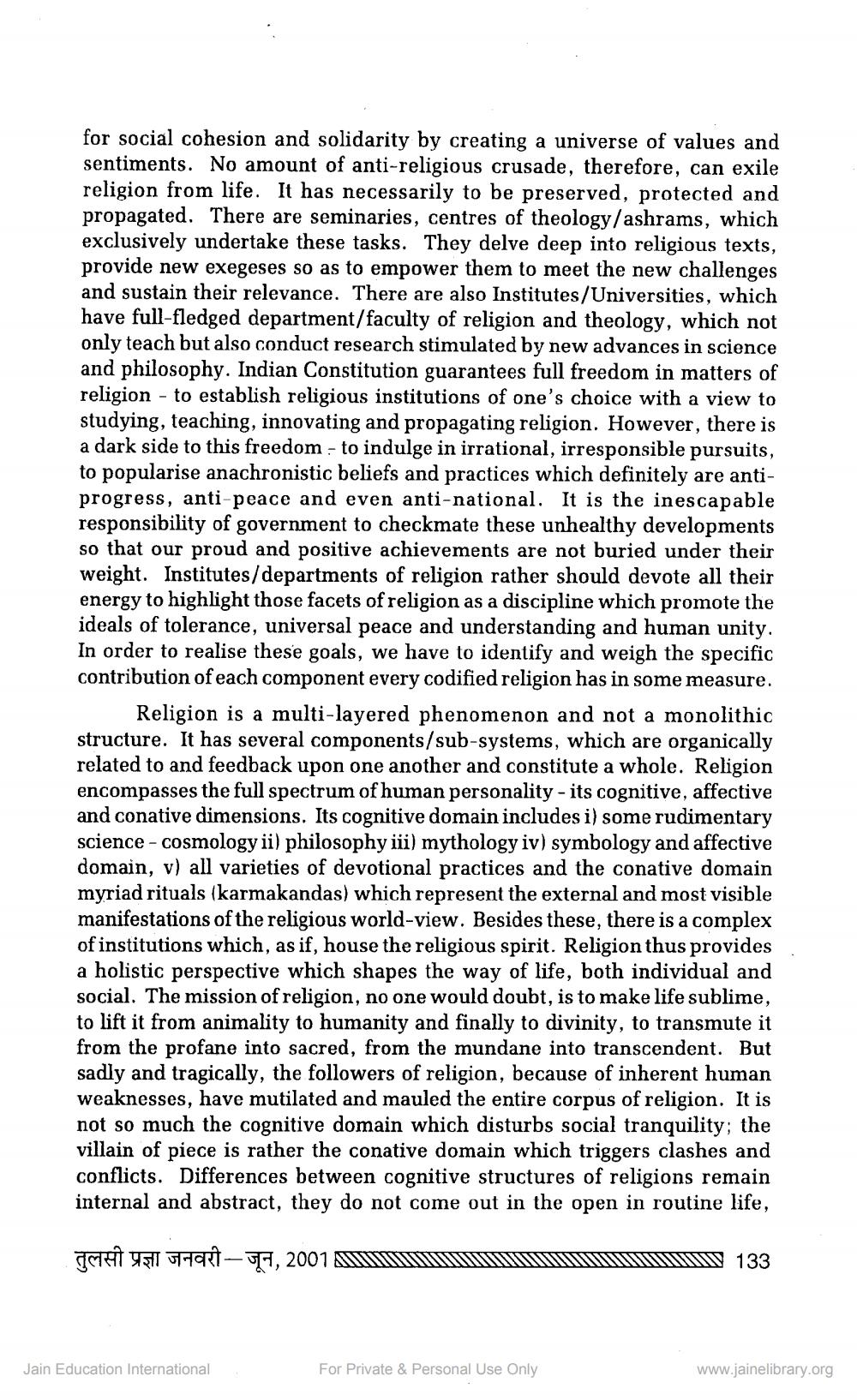________________
for social cohesion and solidarity by creating a universe of values and sentiments. No amount of anti-religious crusade, therefore, can exile religion from life. It has necessarily to be preserved, protected and propagated. There are seminaries, centres of theology/ashrams, which exclusively undertake these tasks. They delve deep into religious texts, provide new exegeses so as to empower them to meet the new challenges and sustain their relevance. There are also Institutes/Universities, which have full-fledged department/faculty of religion and theology, which not only teach but also conduct research stimulated by new advances in science and philosophy. Indian Constitution guarantees full freedom in matters of religion to establish religious institutions of one's choice with a view to studying, teaching, innovating and propagating religion. However, there is a dark side to this freedom to indulge in irrational, irresponsible pursuits, to popularise anachronistic beliefs and practices which definitely are antiprogress, anti-peace and even anti-national. It is the inescapable responsibility of government to checkmate these unhealthy developments so that our proud and positive achievements are not buried under their weight. Institutes/departments of religion rather should devote all their energy to highlight those facets of religion as a discipline which promote the ideals of tolerance, universal peace and understanding and human unity. In order to realise these goals, we have to identify and weigh the specific contribution of each component every codified religion has in some measure.
Religion is a multi-layered phenomenon and not a monolithic structure. It has several components/sub-systems, which are organically related to and feedback upon one another and constitute a whole. Religion encompasses the full spectrum of human personality - its cognitive, affective and conative dimensions. Its cognitive domain includes i) some rudimentary science - cosmology ii) philosophy iii) mythology iv) symbology and affective domain, v) all varieties of devotional practices and the conative domain myriad rituals (karmakandas) which represent the external and most visible manifestations of the religious world-view. Besides these, there is a complex of institutions which, as if, house the religious spirit. Religion thus provides a holistic perspective which shapes the way of life, both individual and social. The mission of religion, no one would doubt, is to make life sublime, to lift it from animality to humanity and finally to divinity, to transmute it from the profane into sacred, from the mundane into transcendent. But sadly and tragically, the followers of religion, because of inherent human weaknesses, have mutilated and mauled the entire corpus of religion. It is not so much the cognitive domain which disturbs social tranquility; the villain of piece is rather the conative domain which triggers clashes and conflicts. Differences between cognitive structures of religions remain internal and abstract, they do not come out in the open in routine life,
• तुलसी प्रज्ञा जनवरी- जून, 2001
Jain Education International
For Private & Personal Use Only
133
www.jainelibrary.org




